
Gold Mining in Africa, Russia and Kazakhstan — Nordgold
---

Humans and gold have been intrinsically linked for thousands of years. This dense, soft and noble metal is also used in an ever-increasing number of applications, from a method of wealth accumulation and a symbol of prosperity & power, to an important component of many electronic devices. More than 150 thousand tonnes of pure gold have been produced in the history of humankind. Production methods have continuously evolved from a straightforward search for gold nuggets and gold panning, to high-efficiency mines, pits, ore preparation plants and refineries.
Filmed across two continents, this picture report showcases the gold production process at mines owned and operated by Nordgold, a leading internationally diversified gold producer with assets in West Africa, Russia and Kazakhstan.
Русская версия репортажа: http://gelio.livejournal.com/226150.html
1. Gold production continues to increase alongside global population. From 705 tonnes in 1912, gold mining production to just over 3000 tonnes in 2016 (Source: Statista.com). Russian gold producer Nordgold has been a major contributor to this overall rise.. Established in 2007 initially as a division of Russian steel giant Severstal before splitting out in 2009, Nordgold has grown to become one of the world’s leading gold mining companies producing over 850 koz of gold a year.

2. Nordgold currently operates nine mines, including one each in Guinea (Lefa) and Kazakhstan (Suzdal), three in Burkina Faso (Taparko and Bissa-Bouly hub) and four in Russia (Berezitovy in Amur Oblast, Neruyngri in Yakutia, and two assets in the Republic of Buryatia—Irokinda and Zun-Holba).

3. Global gold production soared in the 1980s and 90s driven in particular by a sharp growth in open pit gold mining (the share of open pit mining increased globally from 30% to 70% between 1988 and 2003). Six of Nordgold’s nine mines are open pit operations. Underground mining is only used in Buryatia and Kazakhstan.

4. Open pit mining starts with the drilling rigs. 400 holes need to be drilled to blast 100 thousand tonnes of rock. The rig normally drills holes up to 6 meters deep.
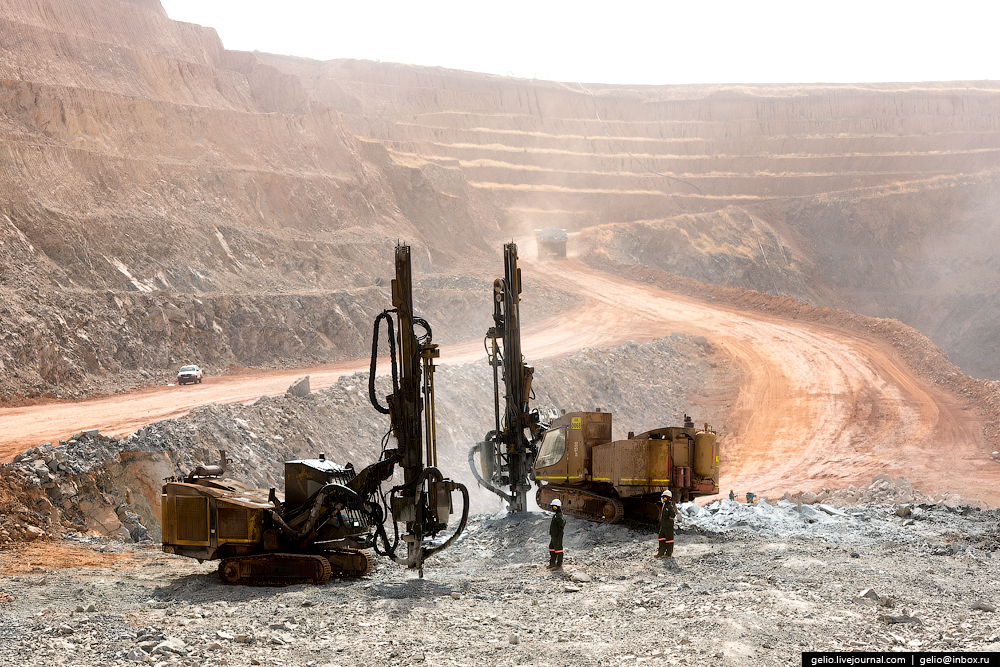
5. Controlled blasting in an open pit is a very exact process requiring the carefully calculated placement of charges.
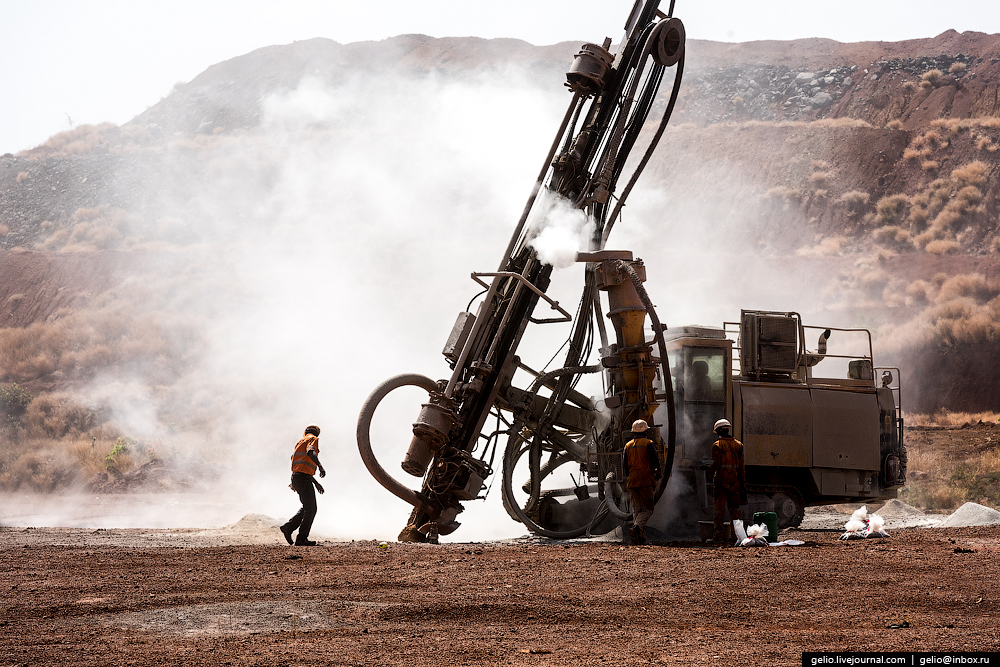
6. Blasting not only makes the pit deeper but also produces cutbacks.

7. The last seconds before detonation. Employees are evacuated to a safe location. Only the most experienced staff are trained to control blasting from remote terminals. Directional blasting technology is used in open pits.
Directional blasting technology is used in open pits. Tens of thousands of tonnes of rocks are pushed by the blast in a predetermined direction to a precise distance.

8. The heavyweights take their turn after the blast. Haul trucks are used to remove the rock.

9. The Sides of the pit are carefully planned to support a haul road for the safe operation of the loaded trucks.

10. A mining excavator continues to load blasted rock into a haul truck.

11. With a 60-cubic-meter body, the Cat 777D can haul over 90 tonnes of rock.

12. Open pits operate 24x7.

13. The open pit at the Berezitovy mine in Amur Oblast is 450 meters deep after 10 years of mining. As the pit gets deeper, mining becomes more expensive, so the mine is gettinbeing prepared for underground mining to access the deeper deposits; the decline will go 100 meters deeper to provide access to the ore. Final exploration and licensing activities are already underway in preparation for the switch.

14. The Komatsu PC1250-7 excavator has a 4.5 cubic meter bucket able to load over 4 tonnes of rock and it weighs 110 tonnes.

15. Launched in 2013, Bissa mine in Burkina Faso was Nordgold’s first greenfield asset, a mine which Nordgold had developed from scratch to full production. Nordgold built the mine on time and on budget and it reached full capacity well ahead of schedule, making Bouly a flagship asset for the company. In late 2016, Bissa was expanded to mine gold from the nearby Bouly deposit, which has also exceeded expectations.

16. There’s no idle time for haul trucks at Nordgold’s African mines. A tonne of ore might only contain a few grams of gold (for example, the head grade of Lefa ore in Guinea was 1.05 g/t in 2016). However, even lower grade ores can be economically feasible depending on their depth and properties.

17. A modern mine is a high-technology facility relying on state-of-the-art information technology, far removed from outdated preconceptions about open pit mining. Here, a real-time tracking system is used to monitor the location of the mining fleet in the pit, improving safety and utilisation of the fleet.

18. Mining trucks need to adapt to an extreme range of operating temperatures, from the Artcic conditions in some Russian mines, to the heat of Africa.

19. 6.1 million tonnes of gold ore were mined at Lefa in Guinea in 2016. The mine is now upgrading its fleet to reach 7 million tonnes in 2017.

20. The Bissa pits in Burkina Faso were expanded in 2016. Cutbacks were necessary to provide access to high-grade ores.

21. A haul truck exits the Lefa pit at Lefa Mine in Guinea.

22.

23. Underground mining is used when open pit mining is not feasible for environmental or economic reasons. Mine development starts with the decline that is built to provide the mine fleet with access to ore bodies.

24. After that, drilling rigs take turns making cylindrical holes ready to place blasting charges in the rock.

25. Drilling rock underground can result in significant dust. Water is sprayed on the mine face to reduce risks to the operator and to wash the blast holes.

26. The mine fleet control station at Buryatzoloto. Irokinda and Zun-Holba are older mines (over 25 years in operation) that prior to Nordgold ownership relied mostly on inefficient manual labor. Today, full-scale automation is underway.

27. An important feature of underground mine equipment is their low profile. These machines are designed to work in confined spaces.

28. An underground loader operator at the Zun-Holba mine in Buryatia.

29. Geologists routinely take rock samples and log their properties.

30. Conveyors play an important role in gold production. Once mined rock is delivered by haul trucks and crushed, it is fed for further treatment using conveyor belts.

31. Crushed ore on its way to the mill circuit. The diameter of ore fragments after crushing depends on each individual mine. Large fragments are sifted out and returned for secondary crushing.

32. One method of the gold production process is “heap leaching” whereby crushed rock is placed into a leach solution that is later used for gold extraction. Nordgold added a heap leaching pad at Bouly in 2016 to expand the capacity of its Bissa flagship mine. The new Bouly mine reached full capacity just two months after launch and was Nordgold’s second greenfield project

33. Crushed ore is stacked into a huge pile for further treatment.

34. Large fragments of crushed ore are transported to the mill.

35. The underground loader at Lefa, Guinea.

36.

37. At the final stage of preparation, ore is milled into flour-like fine powder.

38. The waste filtration station. Every ore preparation plant produces and stacks waste called “tailings”. At the final stage of gold production, ore solution is filtered after gold extraction. Water and reagents are removed from the slurry and returned to the preparation plant in a closed cycle. After removal of the water, tailings are stacked in special tailing ponds.

39. Taparko preparation plant, Burkina Faso.

40. Ore mills at Berezitovy, Amur Oblast.

41. In 2016, Nordgold mined over 129 million tonnes of rock and processed more than 25 million tonnes of ore.
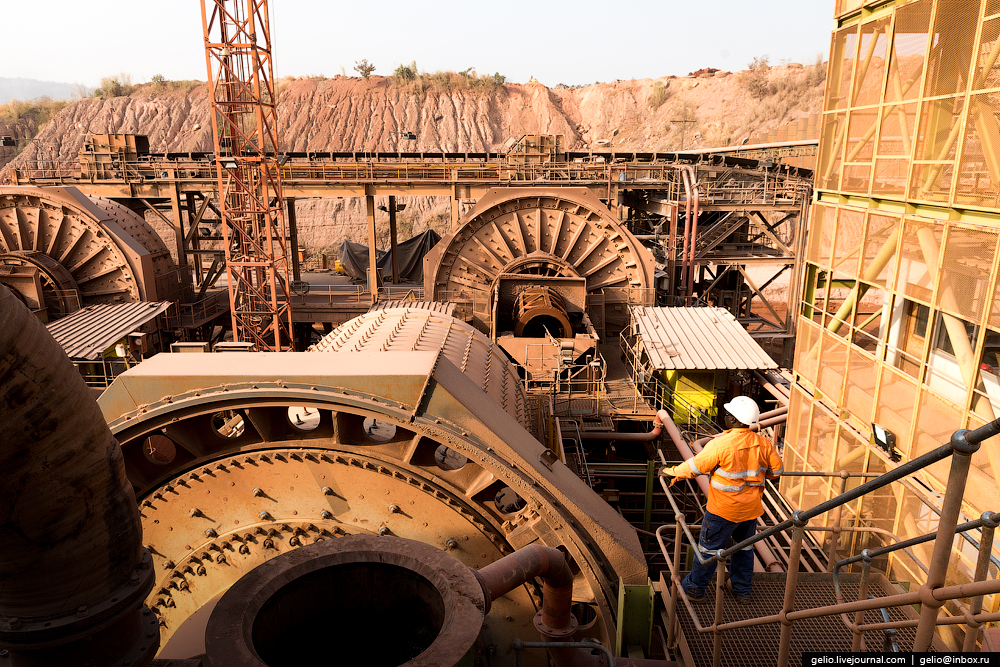
42. Ore stockpile at Lefa, Guinea.

43. Crushed ore is delivered to the stockpile on a conveyor belt.

44. Head grade (quantity of gold contained within the ore) has been constantly reducing globally since late 19th century. New technologies are fine tuned for more thorough and efficient gold recovery and waste recycling. Suzdal mine in Kazakhstan is only the second facility worldwide to use the latest HiTeCC (High Temperature Caustic Conditioning) technology to improve recovery. This technology is also used to retreat tailings.

45. Ore hydrotreatment where milled ore undergoes high-pressure water washing.

46. The Berezitovy ore preparation plant in Amur Oblast uses automated treatment processes. An operator monitors the compliance with technology requirements.

47. Flotation process pland.

48. Flotation is the process of extracting gold from rock. Chemical agents dissolve ore powder and produce foam which is then separated from the rest of the solution, with gold remaining in the foam bubbles.

49. Controller’s computerized workplace looks virtually the same across Nordgold’s global operations. Here, an operator is monitoring the Bissa preparation plant in Burkina Faso.

50. Borax is used to improve gold recovery. This white powder is widely used in households in cleaning agents, teeth whitening products, etc. Though Borax is safe, it is mandatory for the operators to use personal protective equipment.

51. A gold smelter operator’s protective equipment resembles a fireman’s gear. Gold melts at 1064°C and boils at 2856°C.
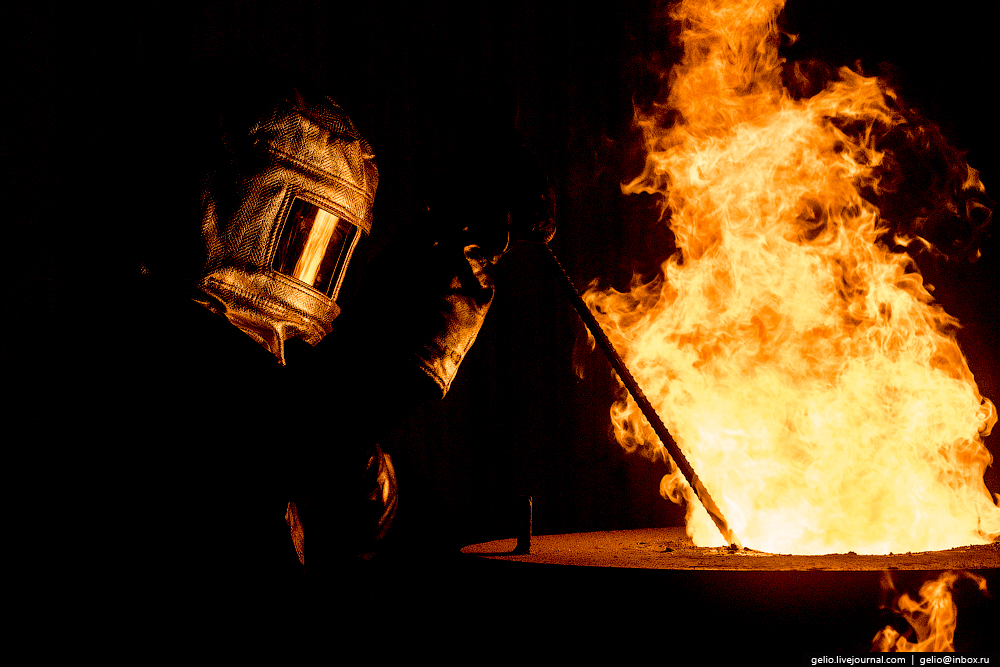
52. The gold smelter at Zun-Kholba, Buryatia.
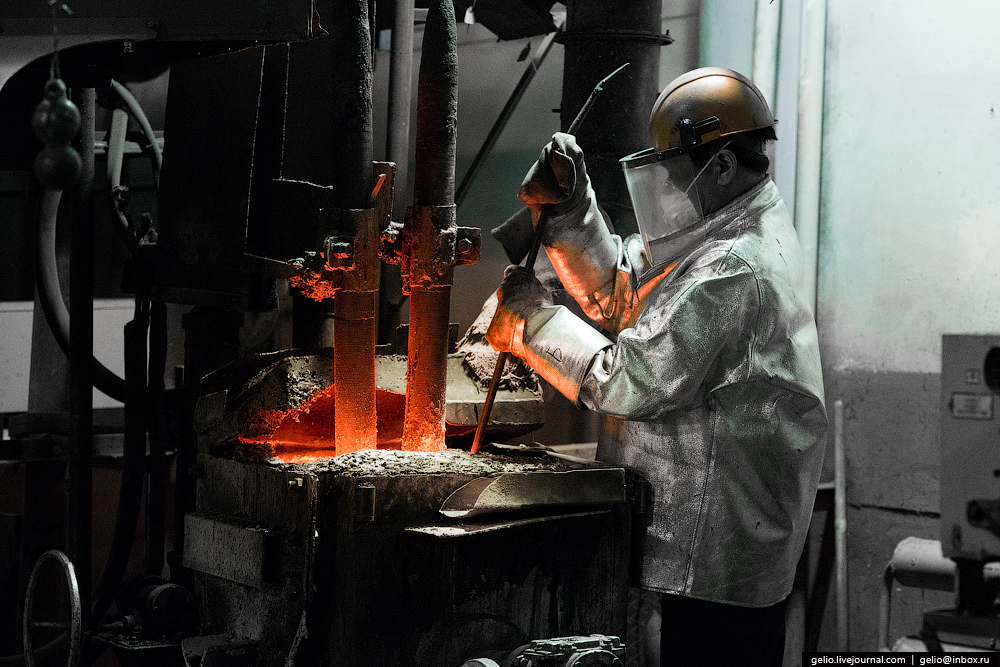
53. The mines produce gold doré Doré bars are sent for refining in gold refineries that accept alloys with at least 70% combined gold and silver content.

54. A doré bar may weigh 15 to 25 kilograms. Bar weight and precious metal content depend on the individual mine.

55. Molten gold is poured to create gold dore bars.

56. A doré bar cooling down after smelting at Bissa, Burkina Faso.

57. In Russian, the word for gold is derived from the words yellow and green. If you look at a new gold bar, you will see that it shows both of these colors. Here a gold bar is being cleaned at Bissa, Burkina Faso.
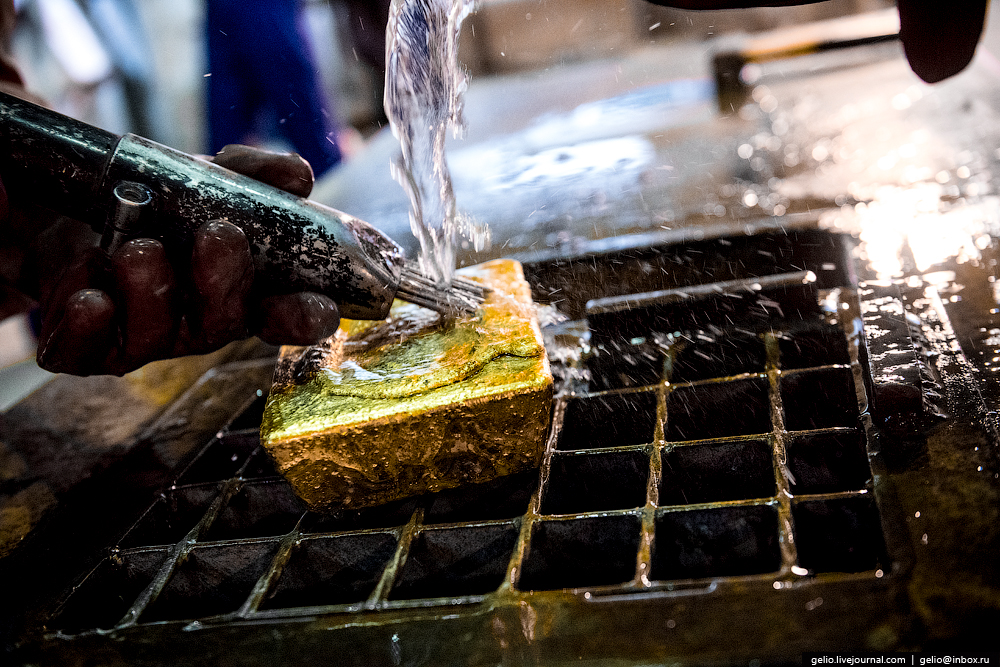
58. Doré bars are polished as they naturally have a rough surface.

59. After polishing, bars are stamped. In this case, it is the stamp of Lefa Mine in Guinea.

60. A doré bar with the Bouly stamp, before shipping to refinery where it will be refined to the ultimate 999 fineness.

61. Nordgold has increased production of refined gold from the 21 thousand ounces in 2007 to 869 thousand ounces—more than 27 tonnes—in 2016. As of early May 2017, one ounce of gold is worth US$1250 in the London bullion market.

62. China was the world’s largest producer of gold in 2016 (over 450 tonnes), followed by Australia (270 tonnes) and Russia (approximately 250 tonnes). Nordgold expects to produce 28 to 29.5 tonnes of refined gold in 2017.

63. Bouly was the second mine in Burkina Faso built by Nordgold from the ground up. 2017 will be its first full year of operation. Nordgold is actively developing its third greenfield project, Gross, in Russian Yakutia.
Gross will become Nordgold’s largest asset in Russia producing around 7 tonnes of gold per year over 17 years. Nordgold also has multiple promising early exploration projects and licenses in Burkina Faso, Russia, French Guiana and Canada.

64. Humankind has produced over 150 thousand tonnes of gold in recorded history. Approximately half of that was used in jewelry and more than 10% in technology. The rest is accumulated in sovereign gold reserves and private estates. It is said that smelting all the world’s gold together would make a 20-meter-sided cube. That is a five-story house of gold!

Русская версия репортажа: http://gelio.livejournal.com/226150.html
Взято: gelio.livejournal.com
Комментарии (0)
{related-news}
[/related-news]